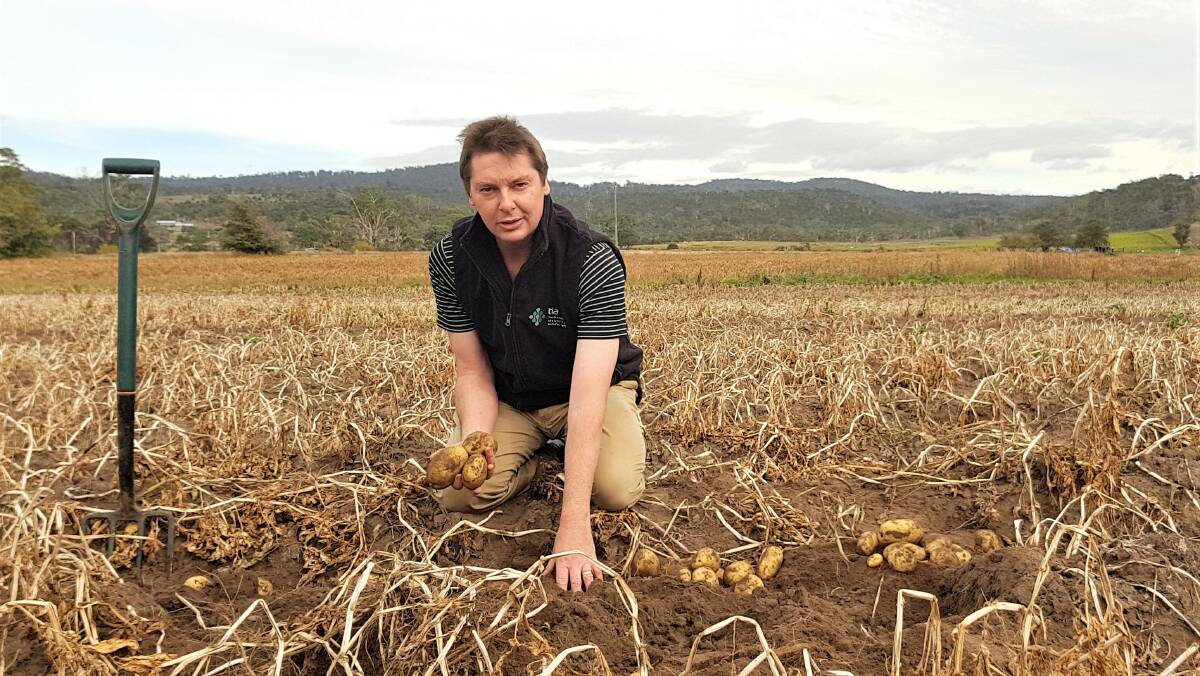
Potatoes are a versatile vegetable, but growing them can be a challenge.
Subscribe now for unlimited access.
or signup to continue reading
The crop is susceptible to disease and weather changes - but one of the most significant challenges producers face is the fight against pink rot.
The soil-borne pathogen can wreak havoc on entire paddocks of crops and render them unsuitable for cultivation. It leads to low yields and higher levels of crop losses due to the spread of infection.
However, a new research project started at the Tasmanian Institute of Agriculture aims to help give farmers new tools in the pathogen fight.
This season has been tough for Tasmanian growers, and it's predicted that the industry will experience severe losses in the current growing season.
- Tasmanian Institute of Agriculture senior research fellow Robert Tegg
The two-year research project aims to develop recommendations to assist potato growers to manage the impact of pink rot.
An aim of the research is to understand how factors such as soil pH, acidifying fertilisers, and elemental nutrients play in pink rot occurrence. It is being led by TIA senior research fellow Robert Tegg.
"Pink rot is a serious problem for potato growers around Australia and particularly in the key potato-producing regions of Tasmania.
"This season has been tough for Tasmanian growers, and it's predicted that the industry will experience severe losses in the current growing season," Dr Tegg said.
In other news:
Pink rot is a significant challenge for Tasmania's potato growers and is characterised by a pink colouration and distinct unpleasant odour. It causes rapid rotting of potato tubers, in-ground and in storage.
It can result in significant yield losses, product downgrade and rejection.
The farm gate value of Tasmania's potato industry grew by 11 per cent last year and has a value of $435 million.
Dr Tegg said there was an urgent need to identify effective control methods to support the industry's sustainability and profitability.
WHAT DO YOU THINK: Join the conversation on Facebook
Simplot Australia potato agricultural manager Jo Tubb said pink rot was a serious soil-borne pathogen and had a significant impact on affected paddocks. She said paddocks with high levels of infection could be categorised as unsuitable for cultivation.
"Some potato paddocks experience a regular substantial yield loss ranging from 5 to 30 per cent even when recommended fungicide treatments are applied," Ms Tubb said.
The project is being funded by Hort Innovation using potato industry levies and contributions from the federal government.














